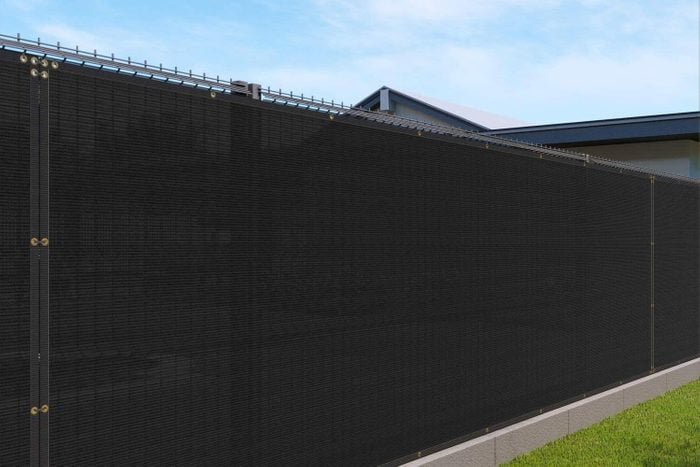
Fabric Fences
Landscapers often use fabric fences to contain sediment and control erosion, and when properly installed, they can also be used as pool fencing. Common fabrics are textiles woven from polypropylene or polyethylene yarn and are opaque, waterproof and wind-resistant.
Fabric fencing panels are lined on all sides and have grommets for attaching them to wood or metal fence posts and railings. They cost from $1 to $2 per linear foot to purchase. Fence installation is DIY-friendly, so a fabric fence is one of the most economical privacy fencing options available.
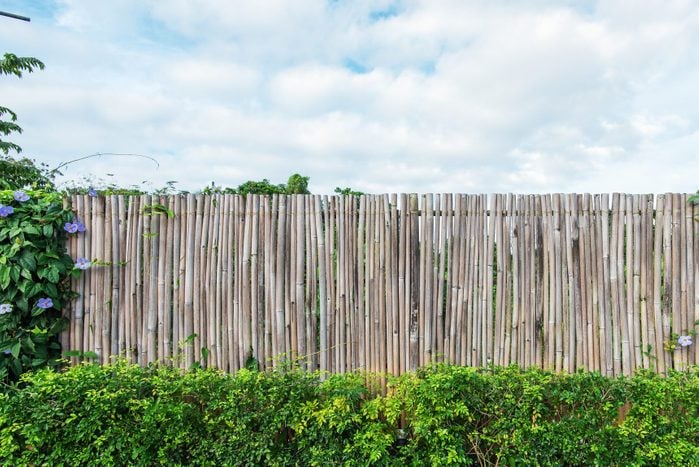
Bamboo Fences
Bamboo fencing is, for the most part, temporary fencing you use to enclose your garden or add a tropical element to your patio. It comes in 6- to 16-foot rolls, and you can also buy bamboo screens with wood frames.
Real bamboo fencing is inexpensive and lasts for two to three years, while synthetic bamboo can last a few years longer. You support it by attaching it to wood or steel posts with wire or cable ties. It provides a good privacy barrier and keeps critters in or out as long as you provide a secure gate. It costs from $2 to $10 per linear foot, and it’s easy to install yourself.
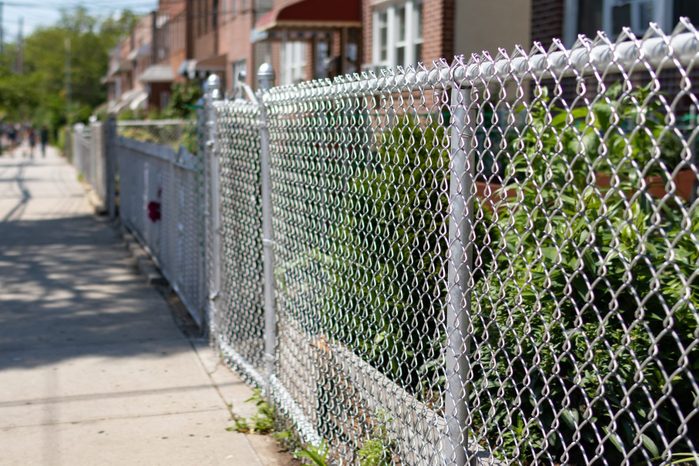
Chain Link Fences
The ultimate utility fencing, chain link provides a secure barrier to keep pets and children in the yard and wildlife and intruders out. A chain link fencing system consists of galvanized steel posts, rails and mesh fencing. The mesh sometimes has a vinyl coating to improve its appearance.
Installation is straightforward (some pros consider chain link the easiest fencing to install), but the mesh is heavy and difficult to manipulate, so most homeowners opt for professional installation. By itself, chain link offers little privacy, but you can add privacy slats (usually made of aluminum or plastic), if desired. Cost for professional installation ranges from $15 to $30 per linear foot for labor and materials. Learn how to paint a chain link fence.
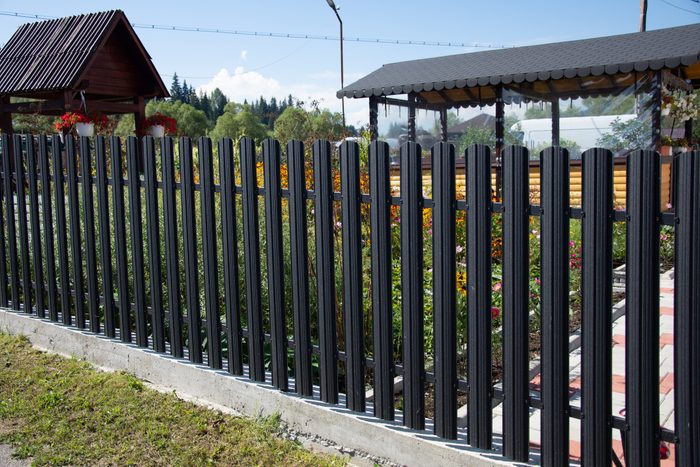
Aluminum and Steel Fences
Aluminum and steel fences are usually manufactured in panels with vertical balusters, and finished with a weatherproof, rust-resistant coating. It is possible to find solid aluminum fence panels — sometimes combined with another material, such as wood or composites — but they aren’t as common as baluster panels.
Metal fencing adds an elegant touch to a well-manicured property and can be combined with concrete or brick posts or walls for a more formal look, but it doesn’t offer much privacy. Professional installation is recommended and costs from $35 to $60 per linear foot for labor and materials.
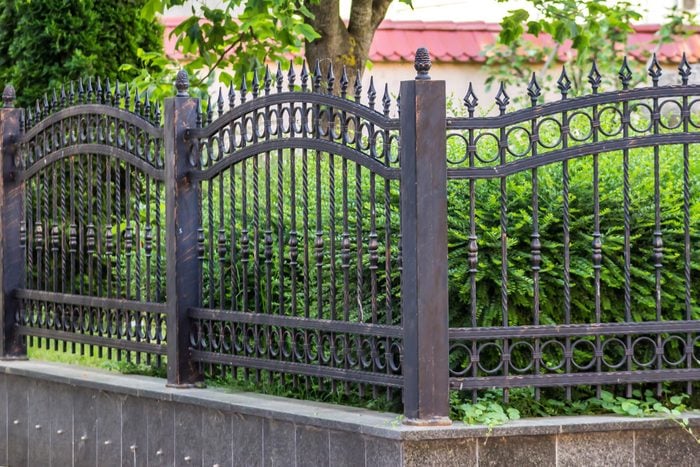
Wrought-Iron Fences
Another type of metal fencing, wrought-iron offers the ultimate in elegance and traditional appeal. It comes in pre-fabricated panels and is easy to maintain, but installation is generally a job for pros.
Contemporary wrought-iron fencing is typically made from steel or aluminum — not iron — and it has all the durability and longevity those materials offer. What sets wrought-iron apart from other metal fencing is the ornate design. It’s the ideal fencing to frame a small yard with manicured landscaping and an old-world, wooden entry door. Professional installation ranges from $28 to $56 per linear foot for labor and materials.
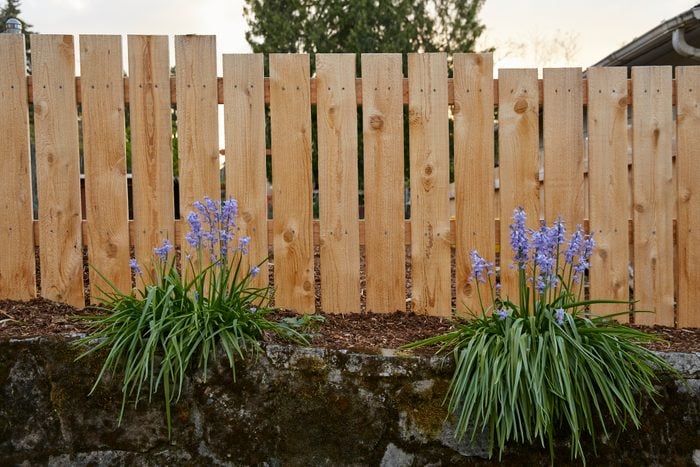
Wood Fences
The most common wood fence styles use pickets, slats or panels, and the flexibility of wood allows for multiple variations. The wood most often used for the fencing is cedar, redwood or pressure-treated pine, while posts are typically pressure-treated pine or fir.
Anyone with basic carpentry skills can erect a wood fence, although the ease of the job depends on its length and the terrain. Wood provides a classic look and can last 20 years or more with proper maintenance. Depending on the amount of wood required, as well as who does the installation, the cost ranges from $15 to $30 per linear foot.
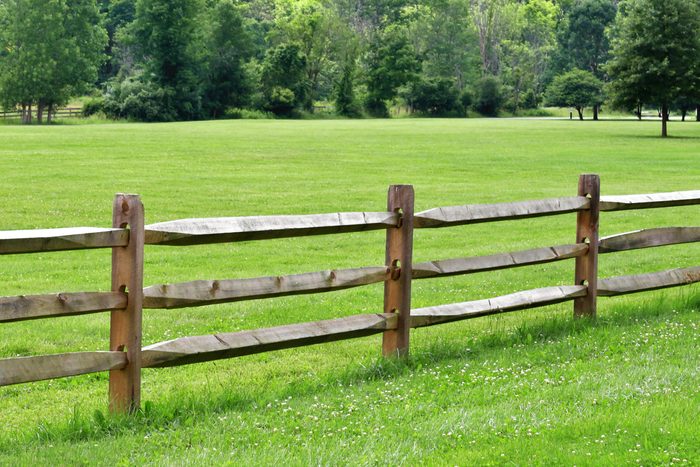
Post-and-Rail Fences
AKA a ranch fence, this type of fence consists only of wooden posts and rails. The posts are more robust than those used for wire fencing and are often dug straight into the ground (not set in concrete). The rails are made from 2×4 lumber or something similar.
A post-and-rail fence is another DIYable option for corralling livestock or establishing boundary lines, and it’s more wildlife friendly than an electric or barbed-wire fence. It can also serve as a landscape feature in a large yard. It costs from $11 to $24 per linear foot to build one yourself.
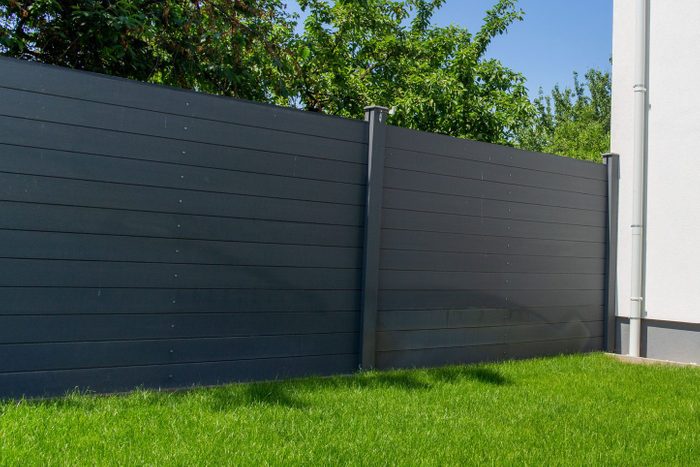
Composite Privacy Fences
Composites are materials made from recycled wood fibers and resin. They are considered green building materials, however, composite materials aren’t recyclable and usually end up in landfills, so it’s good to keep that in mind.
Composite fencing is made to resemble wood and can outlast it. Composite fencing usually comes as a system of posts and panels and is primarily used as privacy fencing. Composite materials are heavy, which can make DIY installation challenging, but panels and posts have connectors to help mitigate the challenges. Professional installation costs (labor and materials) from $11 to $45 per linear foot on average, and can be as high as $57 for high-end products.
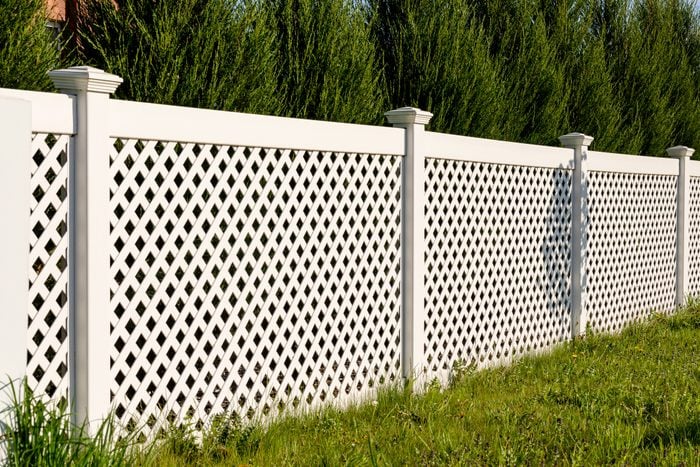
Vinyl Fences
Vinyl is one of the longest-lasting fence materials, it’s low-maintenance, and it’s available in pickets or privacy panels that you assemble on-site. The posts are typically vinyl-coated pressure-treated wood.
Vinyl fencing components typically come with easy-to-use, pre-installed connectors, which makes installation a snap for anyone who wants to DIY. All used vinyl fencing components are 100 percent recyclable, making vinyl an even greener building product than wood. One drawback of vinyl, however, is that it has to be a light color to prevent UV degradation. Professional installation runs from $20 to $45 per linear foot for labor and materials. Check out our guide to help you break down the pros, cons and costs between vinyl versus wood fences.
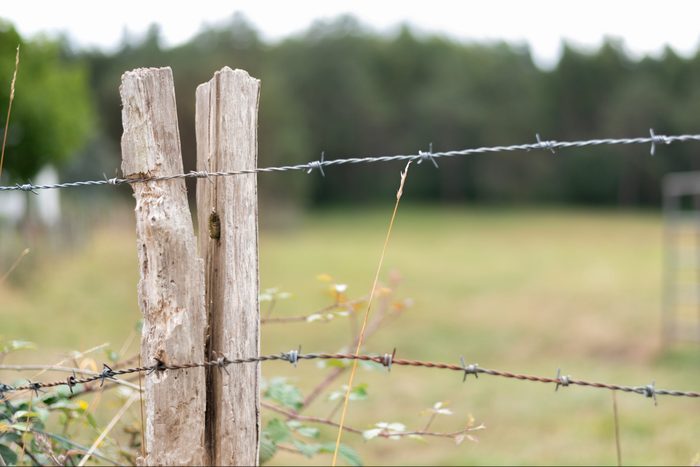
Wire Cattle Fences
The simplest option, a wire fence may be all you need to mark boundaries and/or keep livestock corralled. The wire can be electrified for extra security, or you can use barbed wire.
Installation involves little more than setting posts, running heavy-gauge wire between them and possibly connecting the wire to a power source, so it’s totally DIY friendly. You can even avoid digging if you set metal fence posts with a fence post driver. Costs run between $1 and $4 per linear foot for materials.
